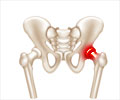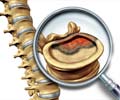Alendronate Medication Information
Discover comprehensive details about Alendronate, including its pronunciation, uses, dosage instructions, indications, and guidelines on how and when to take it or avoid it.
The updated prescription information covers potential side effects, precautions, warnings, and storage recommendations.
Additionally, explore the Alendronate brands available in India and internationally, along with pricing information. For personalized advice, consult your healthcare provider.
Generic Name : Alendronate Pronunciation : a-LEN-droe-nate ICD Code : Y57.9 Therapeutic Classification : Bone EnhancersBrand Names or Trade Names of Alendronate
India :
International :
Fosamax
Why is Alendronate Prescribed? (Indications)
This medication is used to treat or prevent osteoporosis or bone thinning in men and post-menopausal women and Paget's disease or bone deformity. It is also recommended for patients taking steroids that affect bone health.Alendronate is a bisphosphonate reduces the amount of calcium released from the bones into the blood.
When should Alendronate not be taken? (Contraindications)
Contraindicated in patients with hypersensitivity, decreased level of calcium in blood, esophageal abnormalities and factors which delay esophageal emptying, severe kidney impairment, inability to stand or sit upright for more than half an hour, during pregnancy and breastfeeding.What is the dosage of Alendronate?
PO: The recommended dose is 5 to 10mg once daily or 35 to 70mg tablet once weekly.How should Alendronate be taken?
It comes as a tablet, should be taken on an empty stomach.What are the warnings and precautions for Alendronate?
•Caution needed in patients with history of upper gastrointestinal disorders (discontinue if symptoms worsen); ulcers and active gastrointestinal bleeding.Correct vitamin D and calcium deficiency before starting therapy.
Not recommended for use in patients with CrCl <35 ml/min.
Proper dental care is important while taking this medication.
Do not drive a car or operate machinery, avoid alcohol and smoking while taking this medication.
What are the side effects of Alendronate?
Postmenopausal womenGastrointestinal- Abdominal pain, nausea, indigestion, constipation, diarrhea, flatulence, acid regurgitation esophageal ulcer, vomiting, difficulty in swallowing and stomach inflammation.
Musculoskeletal - Bone, muscle/joint pain, muscle cramp and osteonecrosis of the jaw.
Central Nervous System - Headache and dizziness.
ENT- Taste perversion.
Men
Gastrointestinal - Acid regurgitation, flatulence, heart burn, diarrhea, abdominal pain and nausea.
Body as a Whole - Hypersensitivity reactions, muscle pain, uneasiness, weakness and rarely fever.
Central Nervous system- Dizziness and fainting.
Skin- Rash (occasionally with photosensitivity), itching, hair loss, rarely severe skin reactions, including Stevens-Johnson syndrome and toxic epidermal necrolysis.
Eye- Eye inflammation.











